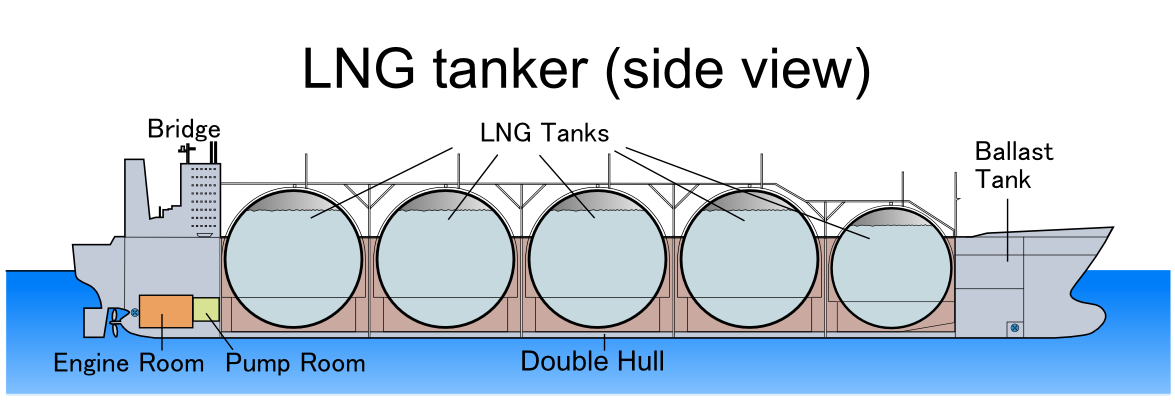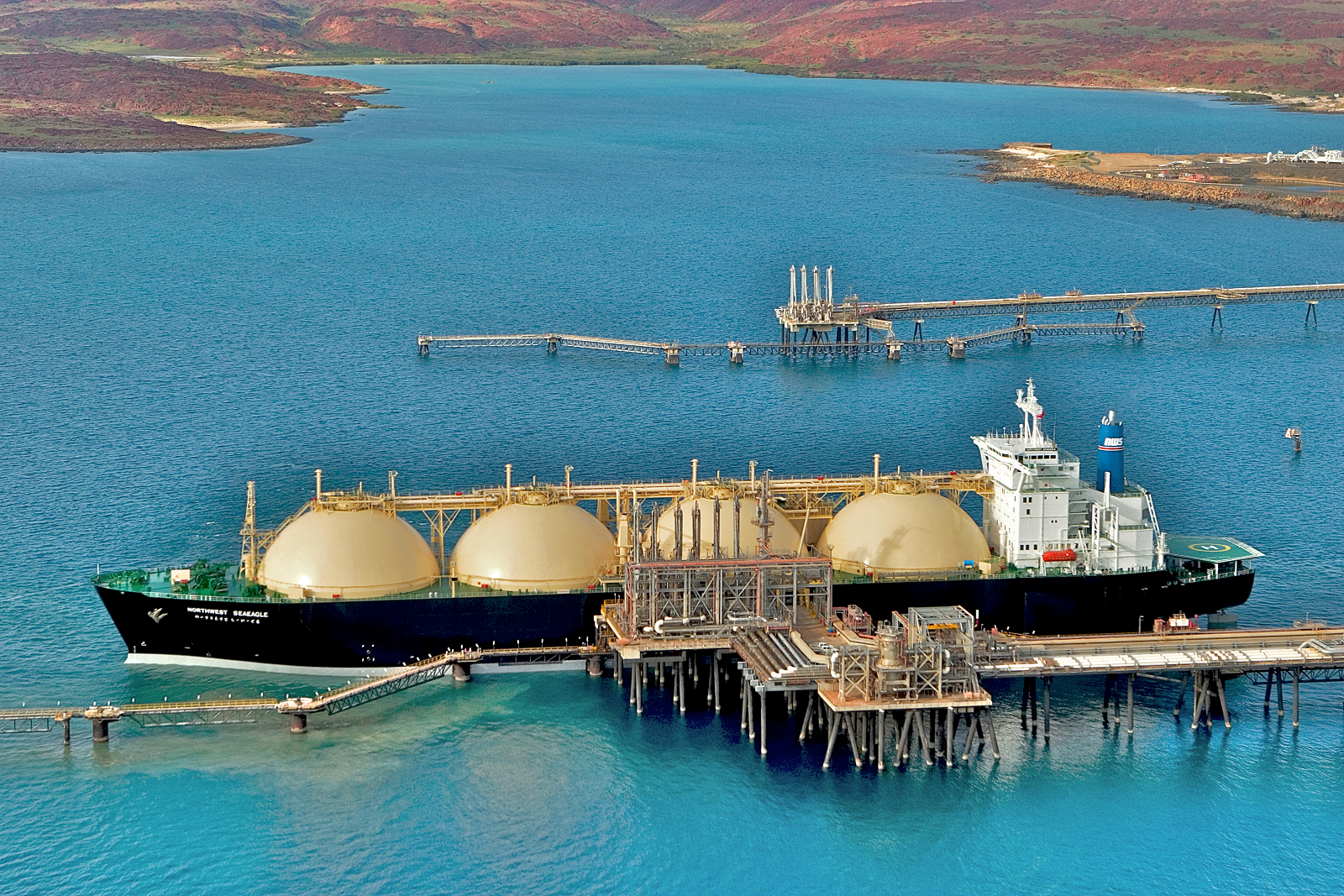The Tampa Bay area has a huge fertilizer business, Port of Tampa moves 2 million tons (!!!) of ammonia from Trinidad annually to be mixed with the locally mined phosphate to make fertilizer. They are beyond nervous.
The Tampa Bay area has a huge fertilizer business, Port of Tampa moves 2 million tons (!!!) of ammonia from Trinidad annually to be mixed with the locally mined phosphate to make fertilizer. They are beyond nervous.
Didn't get to say it before the lock on the Boston thread so I'll say it here. It's actually relevant in both incidents btw.
Thanks and utmost praise to authorities, law enforcement and first responders... the folks who run toward the danger w/o hesitation and bring order out of chaos.
just had to say that
LNG (Liquefied Natural Gas) container ship

http://www.shippipedia.com/ships/ship-types/tanker/gas-carrier/
These things pass through harbors worldwide all the time, filled with flammable/explosive liquids and gases. Some experts say if one were to explode for whatever reason it would have the power of a small nuclear device.

Texas City, TX, 1947. (I hate linking to wiki, but...) http://en.wikipedia.org/wiki/Texas_City_Disaster
Dr. Hess wrote: Texas City, TX, 1947. (I hate linking to wiki, but...) http://en.wikipedia.org/wiki/Texas_City_Disaster
Whoa. That is impressive. As for linking to wikipedia, it is actually more accurate than Brittanica. Source not included.
Mitchell wrote: Just for clarification, do you mean that you fertilize with soluble nitrogen in fertigation lines, or do you mean something else by "liquid nitrogen?"
Its Liquid 28 what we use, it is a highly nitrogen rich water mixture. It'll dry your hands out and crack them everywhere if you get it on you......much better than blindness and such from the anhydrous.....
Also, ![]() @ my phone correcting "meth" to math......damn algebrainiacs.
@ my phone correcting "meth" to math......damn algebrainiacs.
Bobzilla wrote: Amazing photos. It appears that there's 2 fire trucks in that mess. I think we know what happened to the people manning them. Thoughts/prayers to the families.
The town's mayor said they lost 3 trucks.......I wonder if a pickup was included in that.
With that type of bang, rail tracks shifted, crater, I honestly would be surprised to see human remains found from those people. I guess the only solace in this is that they didn't know what happened. ![]() Thoughts and prayers definitely
Thoughts and prayers definitely
OK, after reviewing those pictures and Google earth, I will bet that the firefighters were fighting a fire in the lighter colored building(as that area is charred), and I'm guessing that embers went across and caught the building closest to the railroad tracks that stored whatever detonated. I doubt they knew what was about to happen.
On that note, the ammonia anhydrous tanks(the 4 white tubes in an L-shape) did not cause this explosion, nor blow up.....aerial photos showed them damaged though.
yamaha wrote: I doubt they knew what was about to happen.
I agree. I think that's sad.
In a town of only 2800 people, even the most basic risk assessment possible would have shown this facility was a problem. Responders should be trained in responding to known risks, even if they are volunteers.
They should have known.
It is a terribly tragic commentary on the leadership in the community that they never saw it coming. Those families were let down by their government, emergency trainers, inspectors, and professionals at every level of government.
I worked at a chemical plant for 5 years in a town of 75,000 (with a lot more heavy industry and risks than West had). Emergency responders came to our plant once a quarter or so to practice and train so they would know what to do in the event of an emergency.
This could have been prevented.
The A&M thread I linked to on the first page has a few engineers that were able to piece together the most likely scenario (once you get past some of the name calling).
There was Ammonia Nitrate in pellet form. and it was heated from the fire. It needed to be cooled, but to do that, it needs to be FLOODED with water. Spraying it with water caused a reaction that ignited the AN.
In reply to racerfink:
Definitely plausible as well. My biggest question(the guys video wasn't clear enough to tell) which building was on fire they were trying to stop?
The format of where the trucks are(considering they weren't thrown there) they were working with the building to the east of the one that blew up.
Do we know how much ammonia nitrate was at the plant?
It almost seems like a fire near any amount of this stuff should be evacuate first, worry about fire later.
^This^. That's part of it.
A plant like that has quantities of only a few products. The ability to formulate a complete and thorough response plan and train the responders for it isn't that hard.
Zoning ordinances to restrict residential encroachment- check. Inspections that actually hold people responsible for proper handling- check. Evacuation- check. Protect specific locations and products from exposure to heat- check. Flood area with water- check.
Whatever the appropriate plan was, develop it and follow it. A plant full of known chemicals should never be difficult for responders to respond to.
The plant I worked in had over 3000 different custom chemicals, many of them MUCH nastier than AN. They changed frequently, so it was never known what could be onsite. Responders were still able to be prepared.
PHeller wrote: Do we know how much ammonia nitrate was at the plant? It almost seems like a fire near any amount of this stuff should be evacuate first, worry about fire later.
That's exactly what Svrex is saying, and also what I was saying today at work. Especially volunteer firefighters?!
My father works at an ammonia plant and is on the Emergency Response Team (travels north america for it). It's serious business, a leak is bad news as it is, let alone near a fire.
The stored gas wasn't what blew.......ammonium nitrate is stored in a solid form that looks like a pile of BB's. Also, this wasn't a production plant, it was your everyday neighborhood co-op.
It would have been stored in an open top and side wooden or concrete sided area inside of the building closest to the tracks......ya know, where the 20ft deep crater is. ![]()
FWIW, I agree with the guy from the a&m chat thing, if there is any error here, it is with whomever sprayed water on the AN pellets........that gave it what it needed to go kaboom.
Honestly, with the bulk/dry fertilizer storage, it isn't something that can be passed off as ZOMFG NEGLIGENCE. It seems to be a freak thing that happened.
yamaha wrote: Honestly, with the bulk/dry fertilizer storage, it isn't something that can be passed off as ZOMFG NEGLIGENCE. It seems to be a freak thing that happened.
I can't agree with that.
The hazards and proper handling (explosion, strong oxidizer, flooded water-not spray, etc) are WELL documented and printed on every MSDS. It is a controlled hazardous substance under Homeland Security, has been used in IED's, and has been responsible for the largest industrial accident in US history.
Unless you are saying it is OK for farmers to not know how to use it, shipping and logistics companies to not know how to store and handle it, legislators to not know how to identify it, regulators to not know how to enforce existing guidelines, and firefighters to not know how to approach a burning structure with it inside, then I guess you'd be right.
I'd bet $100 that no one who died there EVER saw an MSDS for AN.
OSHA requires hazard communication. Every employer, authority and leader in the process was completely responsible to communicate the risk, and grossly negligent for not doing so.
Of course, most of them will not be held accountable.
It wasn't a freak accident. It was an accident waiting to happen.
It's interesting how many in this small town said "we always knew it was there, just never thought anything would happen."
Apparently this is a common sentiment among farming towns with similar nearby fertilizer plants.
In reply to SVreX:
I'm a bit confused, are you implying that the company had AN there and didn't tell anyone, because Texas was notified. For one reason or another, I'm thinking AN isn't controlled by the same agency AA is.
Pheller, my local co-op is probably 3 times the size of this place. Granted it is laid out a bit differently, but I'm not worried about it even less than 2mi away.
In reply to yamaha:
I am saying that all of the people involved who had to handle it or respond to the crisis were poorly trained and ill-prepared and that the responsibility for this gross oversight falls on many different employers and agencies.
I am also saying that this could have easily been avoided with the most basic of risk assessment and training programs, which is exactly what employers, governments, and regulatory agencies are supposed (required) to do. They all failed.
It was very predictable and improperly handled, therefore not a freak accident.
I can understand that, the most is, someone berkeleyed up. There could be a lot of people that berkeleyed up, it could have just been one that did. We won't know for sure for awhile.
West Fertilizer Co. Failed To Disclose It Had Unsafe Stores Of Explosive Substance
http://www.huffingtonpost.com/2013/04/20/west-fertilizer-company_n_3121110.html?icid=maing-grid7%7Cmain5%7Cdl7%7Csec1_lnk2%26pLid%3D301731
NEW YORK, April 20 (Reuters) - The fertilizer plant that exploded on Wednesday, obliterating part of a small Texas town and killing at least 14 people, had last year been storing 1,350 times the amount of ammonium nitrate that would normally trigger safety oversight by the U.S. Department of Homeland Security (DHS).
Fertilizer plants and depots must report to the DHS when they hold 400 lb (180 kg) or more of the substance. Filings this year with the Texas Department of State Health Services, which weren't shared with DHS, show the plant had 270 tons of it on hand last year.
You'll need to log in to post.